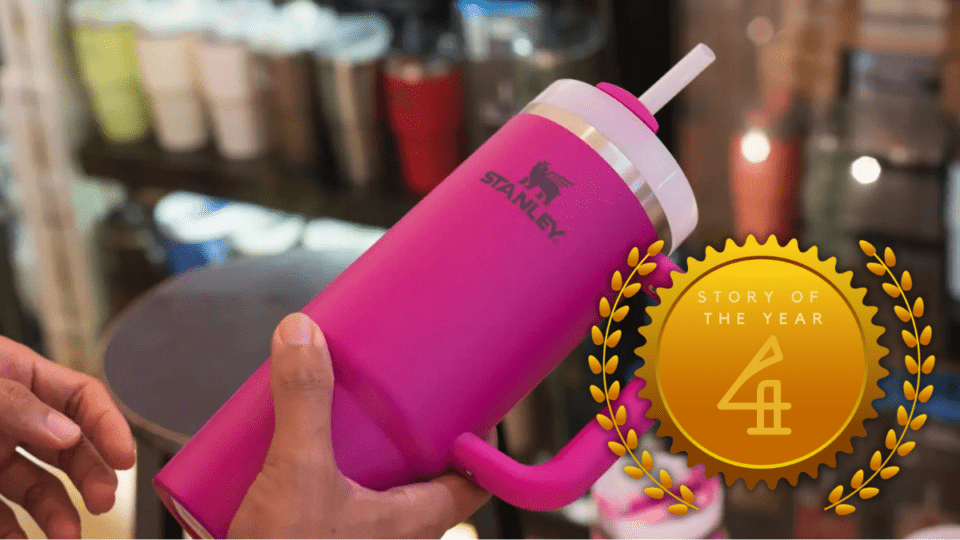Editor’s Note: As 2024 comes to an end, we’re highlighting some of our most-read content of the year. We look forward to continuing to deliver original, thought-provoking stories like this one to our readers in 2025.
The Stanley X Starbucks Valentine’s Day Quencher H2.0 Tumbler is the latest example of a viral retail phenomenon. The 40-ounce tumbler joins the likes of the Cabbage Patch Doll, Tickle Me Elmo and Furbies, which all generated long lines — even stampedes — of consumers clamoring to get their hands on these coveted goods. And while the initial hype is gone, the tumbler has spurred long-term interest, garnering a resale value of about $300 (a staggering 500% increase from its initial price).
Now, Stanley is the star of a much bigger retail industry discussion around what actually inspires this level of consumer response.
“Overall, the popularity of exclusivity or limited access is rooted in consumer psychology,” said Farnoush Reshadi, an Assistant Professor of Marketing at the Worcester Polytechnic Institute, a STEM-focused university in Worcester, Mass. “Many brands are capitalizing on their understanding of human psychology to offer limited-edition and exclusive products that consumers will eagerly rush to buy.”
Reshadi noted that there has been a recent surge in limited-edition product drops across product categories, from cosmetics to fashion, video games and even luxury automobiles. And with the success of the Valentine’s Day tumbler, even more brands are likely going to try to re-create the magic.
In an in-depth interview with Retail TouchPoints, Reshadi digs into this psychology, how scarcity also fosters a sense of community and belonging, and what other brands can learn from the mania surrounding Stanley and other “viral brands.”
Retail TouchPoints (RTP): What were the psychological drivers behind the success of Stanley’s collaboration with Starbucks?
Farnoush Reshadi: Providing limited-edition and exclusive products is a well-established and widely used strategy by brands, known to yield significant profits for them. There are several reasons behind the success of these products: they influence consumers by eliciting various cognitive and emotional reactions.
The fundamental principle driving the success of limited-edition products is creating a sense of scarcity. Research indicates that the feeling of scarcity significantly influences consumers’ behavior. According to the commodity theory, the scarcity of a product enhances its perceived value and appeal. When consumers realize that a product is only available for a limited time or in limited quantities, they perceive it as more special, unique and valuable, leading them to be willing to pay a premium price and invest additional time and effort to acquire it.
Furthermore, limited-edition and exclusive products are sought after because they enable consumers to signal their individuality and bolster their self-esteem. Humans have an innate desire to differentiate themselves from others and engage in behavior that helps them feel unique, and possessing an exclusive product can set individuals apart from the crowd, fulfilling their need for uniqueness. Additionally, exclusive products can function as status symbols, communicating an individual’s social standing, taste and affluence to others. This element of exclusivity has the potential to elevate consumers’ self-esteem and confidence.
Finally, exclusivity often fosters a sense of belonging and community among consumers. Belonging to a select group of individuals with access to exclusive products can create a sense of camaraderie and shared identity. Consumers may feel a sense of pride and validation from being part of this exclusive community, which can further motivate them to purchase exclusive products.
RTP: How does brand equity tie into the power of limited-edition product drops?
Reshadi: Although any brand can create a limited-edition product, such products are more successful when the brand offering them is perceived as luxurious and prestigious. Offering limited-edition products by brands that have a non-luxurious image is unlikely to succeed. In addition to the brand image, a limited-edition product is more successful when it is expensive and when it is consumed publicly.
To that end, brand equity plays a significant role in the appeal of limited-edition products. A strong brand with high equity has built trust, loyalty and recognition among consumers. When such a brand releases limited-edition products, it leverages its reputation and loyal customer base to generate excitement and demand. This desire is particularly strong when the product is consumed publicly, showcasing ownership of a rare item, especially when sold by prestigious luxury brands like Starbucks or Stanley.
As far as building strong brands, limited-edition products can play a crucial role in enhancing brand equity. These offerings cultivate an aura of exclusivity and scarcity around the brand, thereby boosting its perceived value and appeal. Moreover, limited-edition items have the potential to cultivate deeper brand loyalty and engagement with a brand’s existing customers.
RTP: What other “signals” do consumers give off to their peers when they own and use limited-edition products in public?
Reshadi: Products serve as tangible symbols that reflect various aspects of an individual’s identity, including their values, personality, interests and affiliations. For example, someone wearing a T-shirt with the logo of their favorite band may be signaling their musical preferences and cultural identity to those around them. Similarly, driving a hybrid car may communicate a commitment to environmental sustainability, while carrying a high-end designer handbag may signal affluence and status. By selecting and using products in public settings, consumers can express and reinforce their identity. To some extent, all consumers use products in public to communicate their identity to others.
The personality trait known as the need for uniqueness can heighten the desire to buy limited-edition and exclusive products. These consumers exhibit a greater interest in limited-edition and exclusive products, drawn to the opportunity they provide for expressing their uniqueness and standing out from the crowd. Other consumer characteristics that influence product scarcity can include consumer demographics such as age and materialism.
RTP: Are there any specific demographics or consumer personalities that are more susceptible to these influences?
Reshadi: Definitely! Younger demographics, particularly millennials and Gen Z, who are heavy users of social media, often prioritize experiences, individuality and self-expression. They are drawn to products and campaigns that offer unique and exclusive experiences or allow them to express their identity and stand out from the crowd.
RTP: How does the power of social media influence and accelerate everything we’ve discussed thus far?
Reshadi: Social media platforms offer powerful storytelling vehicles that enable brands to craft narratives around their limited-edition and exclusive offerings. Through captivating visuals and engaging narratives, brands can create aspirational stories that resonate with consumers’ desires for status, exclusivity and self-expression. Simultaneously, brands disseminate information about their limited-edition products through collaborating with social media influencers. With their substantial follower bases and influential sway, social media influencers hold the power to sway consumer purchase intentions. By sharing information about limited-edition products, social media influencers can increase consumers’ interest in purchasing such products.
Given that many consumers perceive owning limited-edition and exclusive products as a status symbol, they are highly inclined to share pictures of such items on social media. This is why so many consumers shared videos of themselves standing in line to purchase a pink Stanley cup or shared a photo of themselves after purchasing one. This consumer inclination to share information about limited-edition and exclusive products creates organic content for brands and contributes to the virality of their messages and their success.
RTP: Are there any tactical lessons or takeaways you can share from Stanley or other brands?
Reshadi: One important takeaway from the Stanley-Starbucks case is the power of co-branding. It involves the joint marketing and promotion of the product, leveraging the strengths of each brand to enhance the overall offering and appeal to consumers.
The luxurious image of both Stanley and Starbucks made the product seem more exclusive. Additionally, by collaborating with Starbucks, a company with a large and loyal consumer base, Stanley was able to boost its sales. This partnership not only attracted Stanley’s existing customer base but also drew in Starbucks’ loyal customers, leading to increased sales for the product. Finally, the strong social media presence of both brands served as a powerful tool that helped spread awareness and generate buzz surrounding the limited-edition product.
Overall, co-branding initiatives such as the one between Stanley and Starbucks can help brands capitalize on the strengths of each partner to create a mutually beneficial arrangement that drives excitement, buzz and ultimately, sales.















